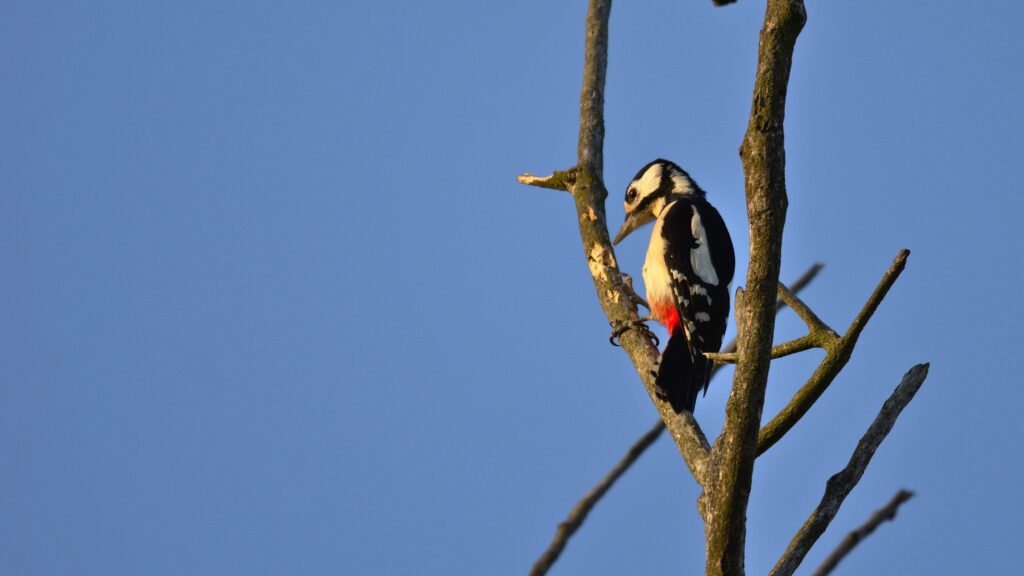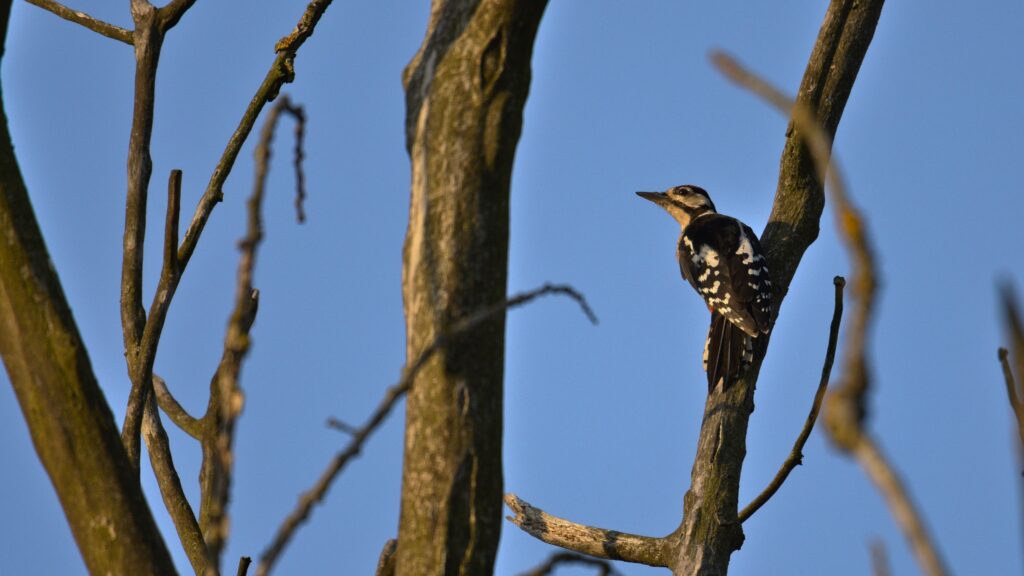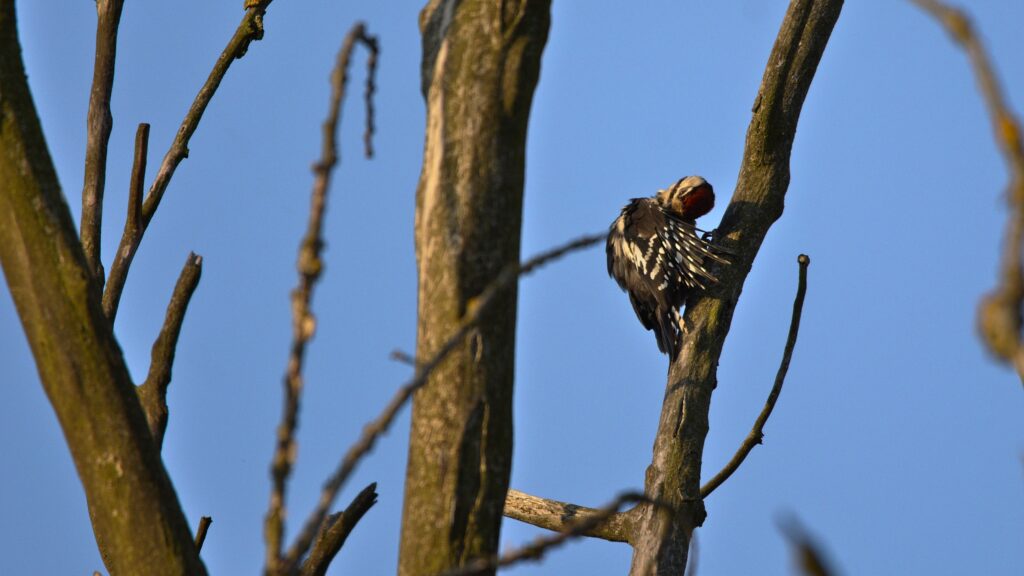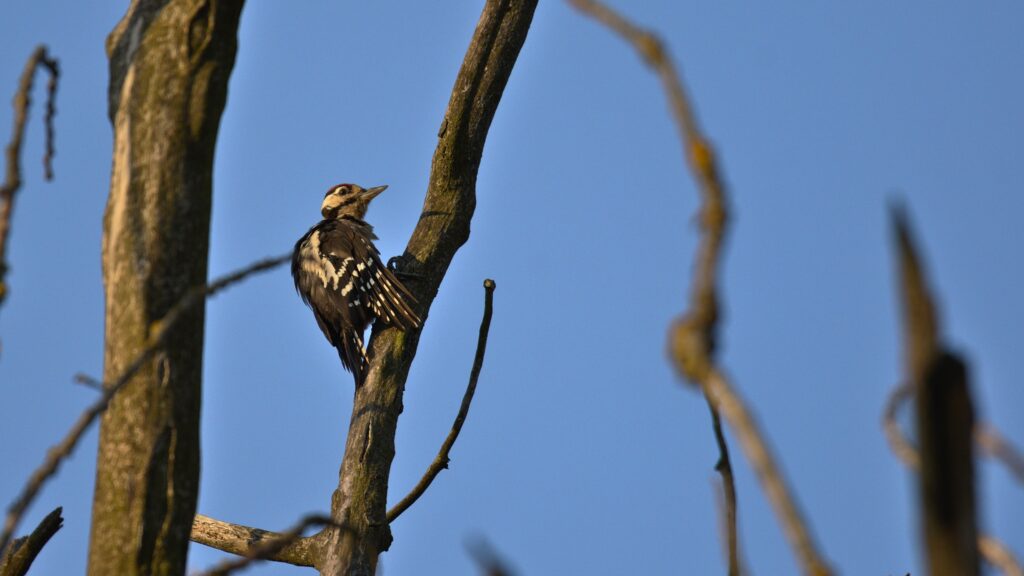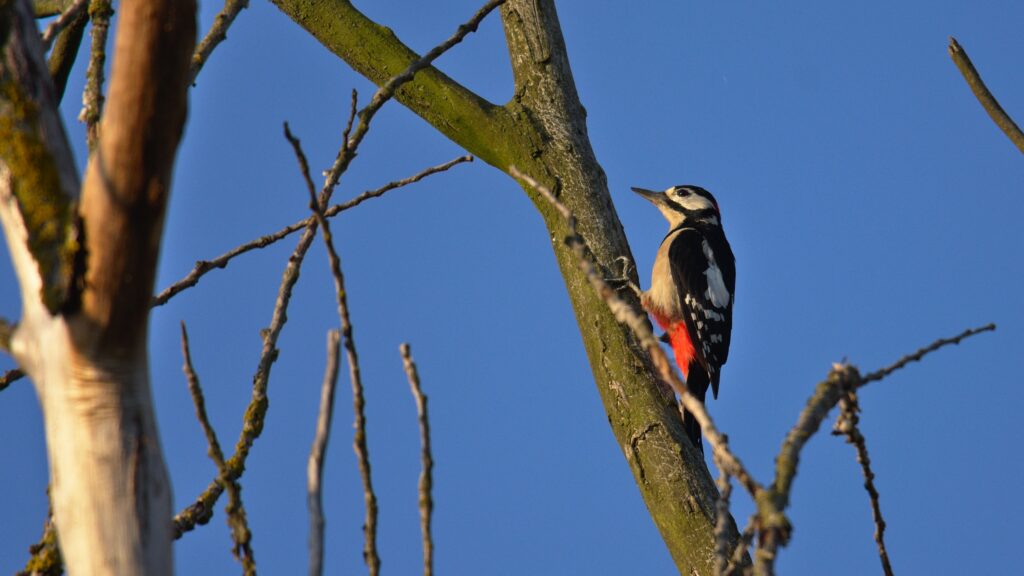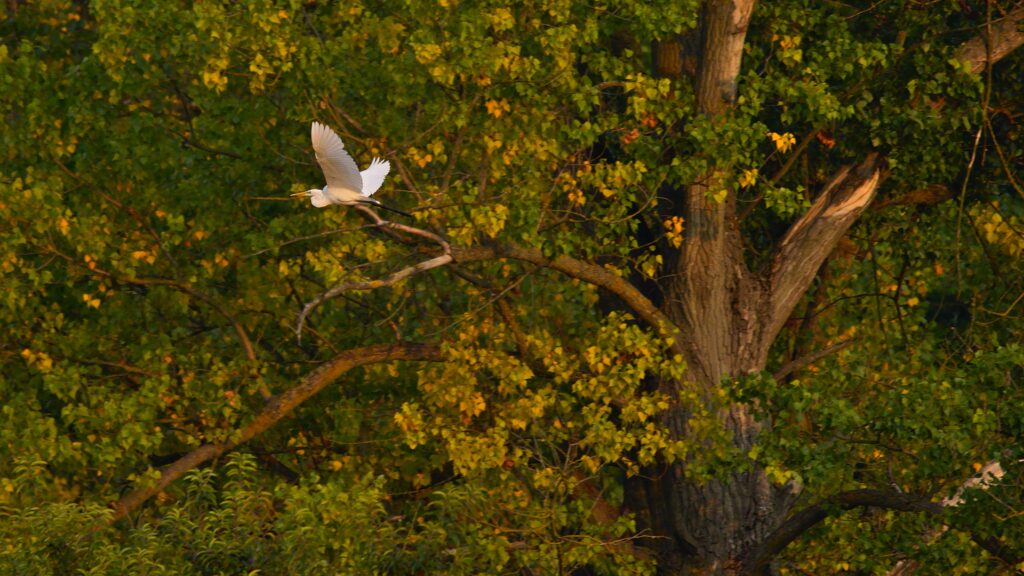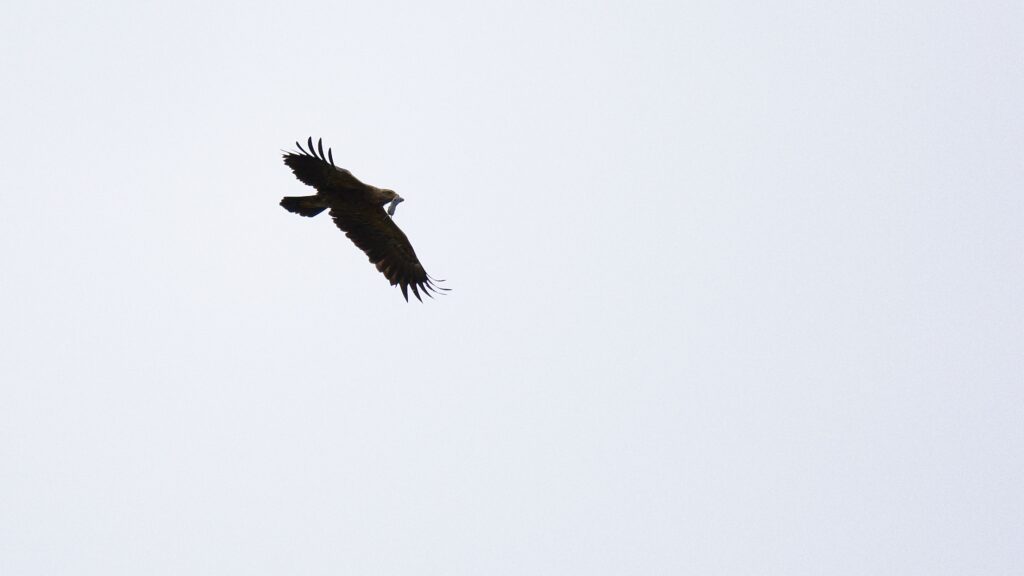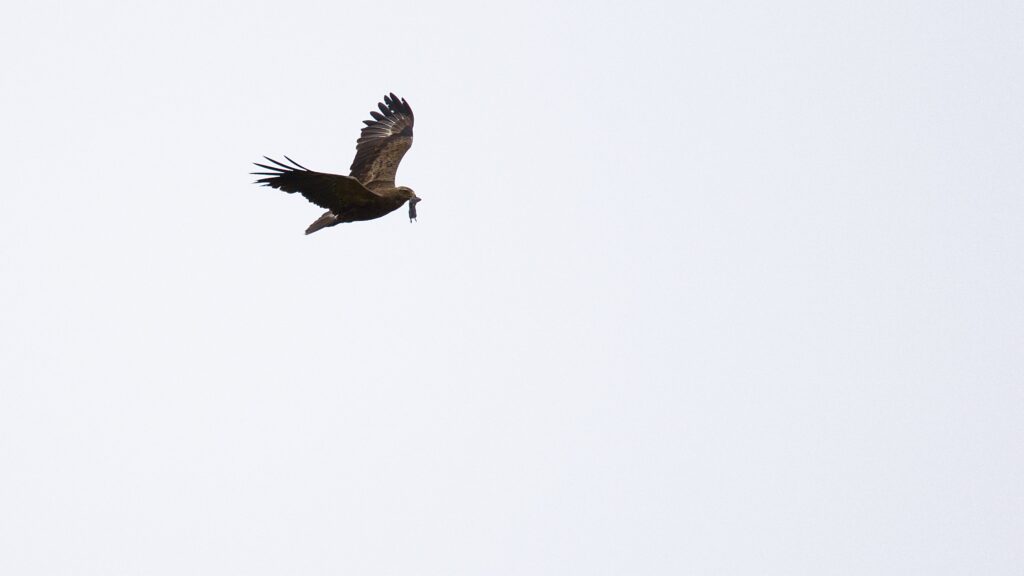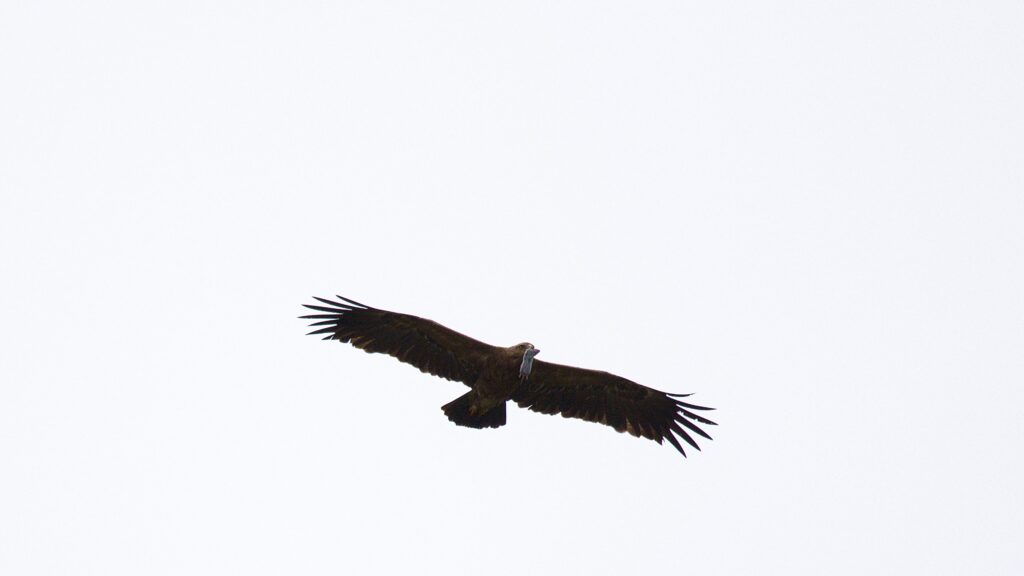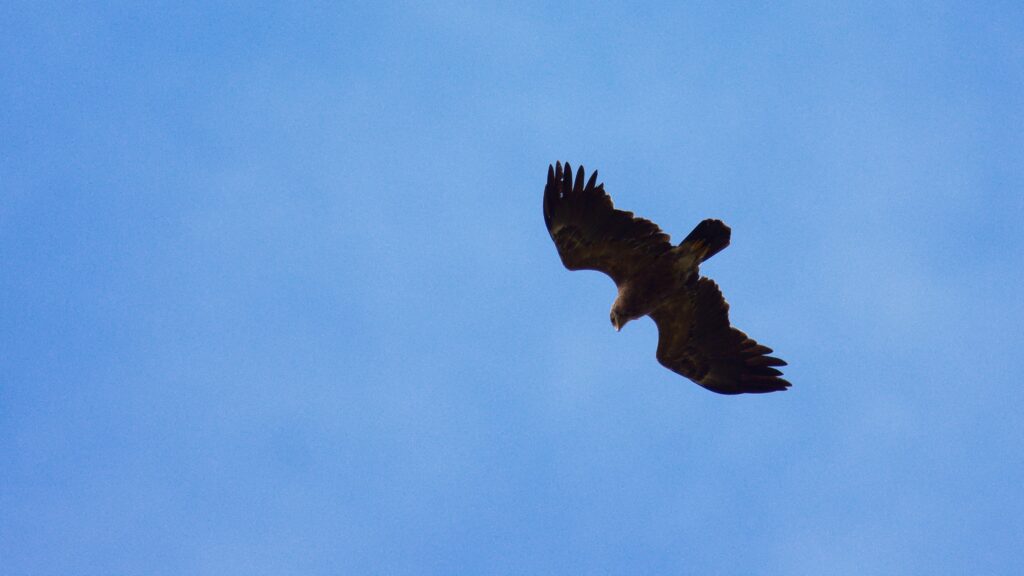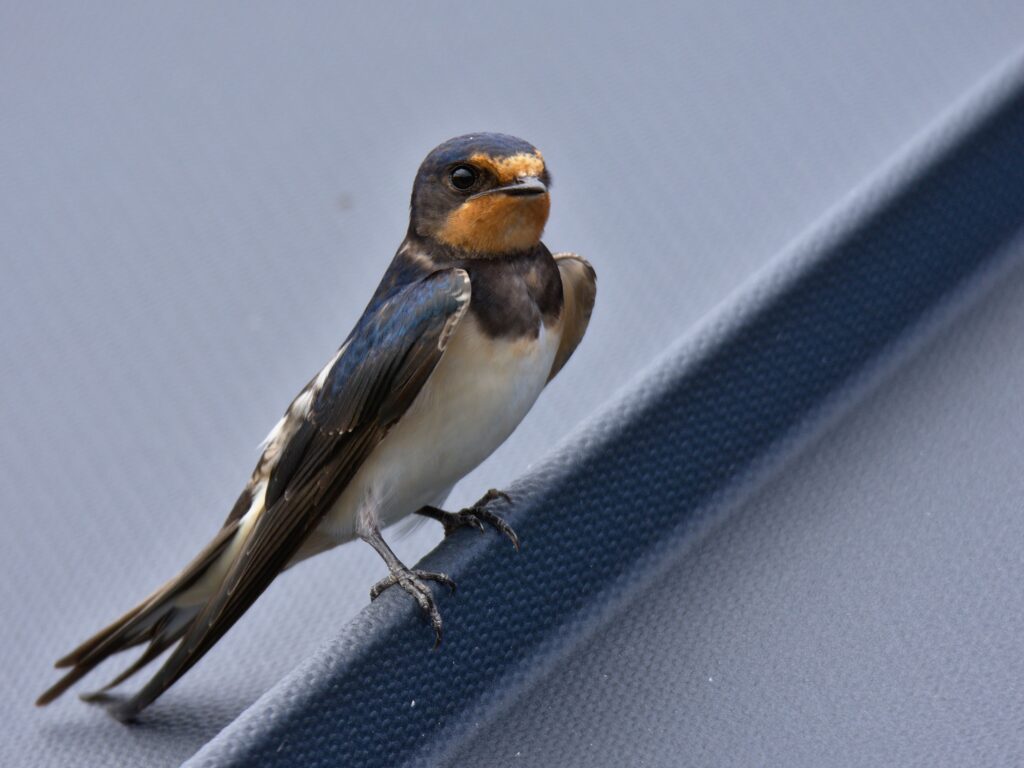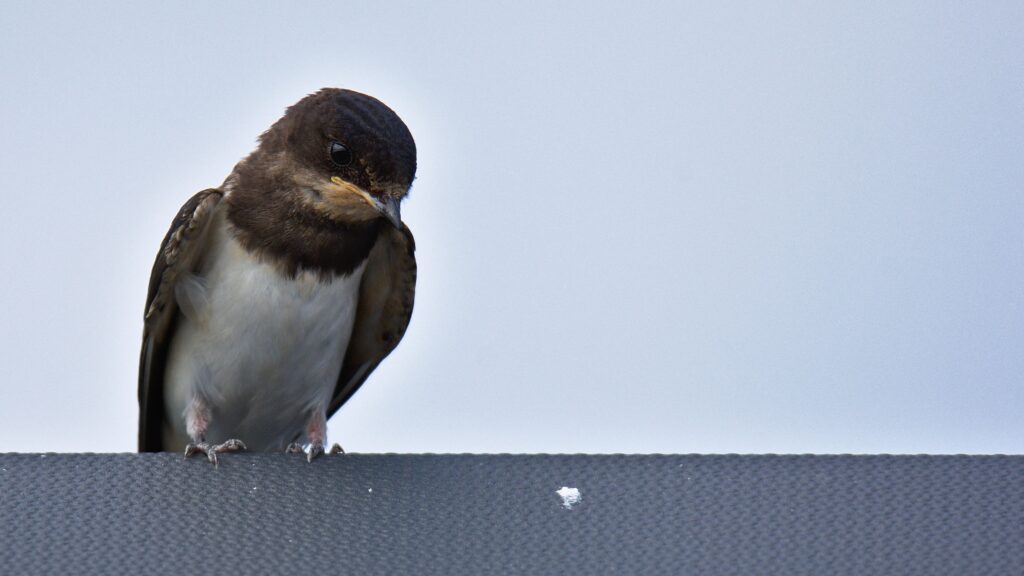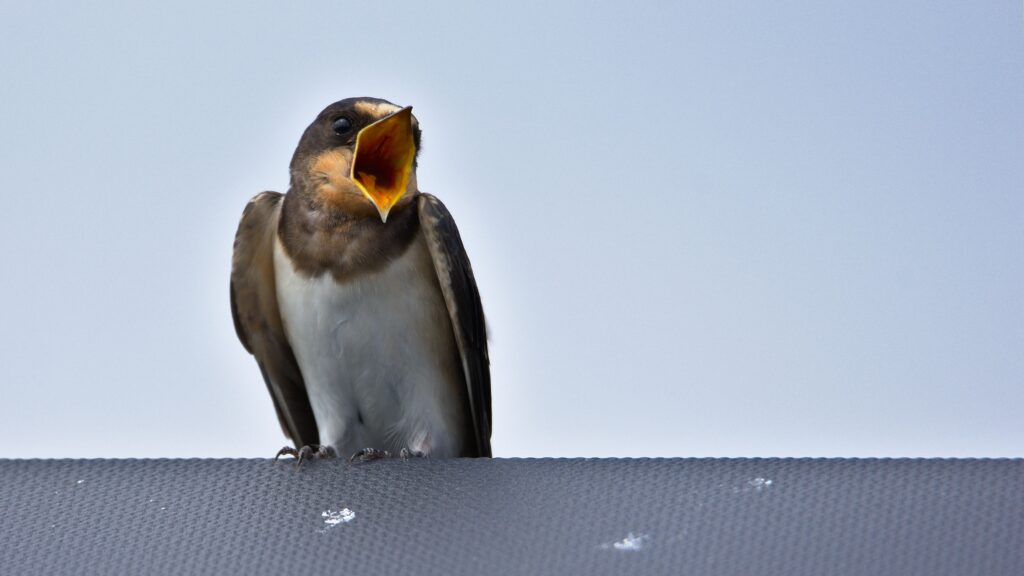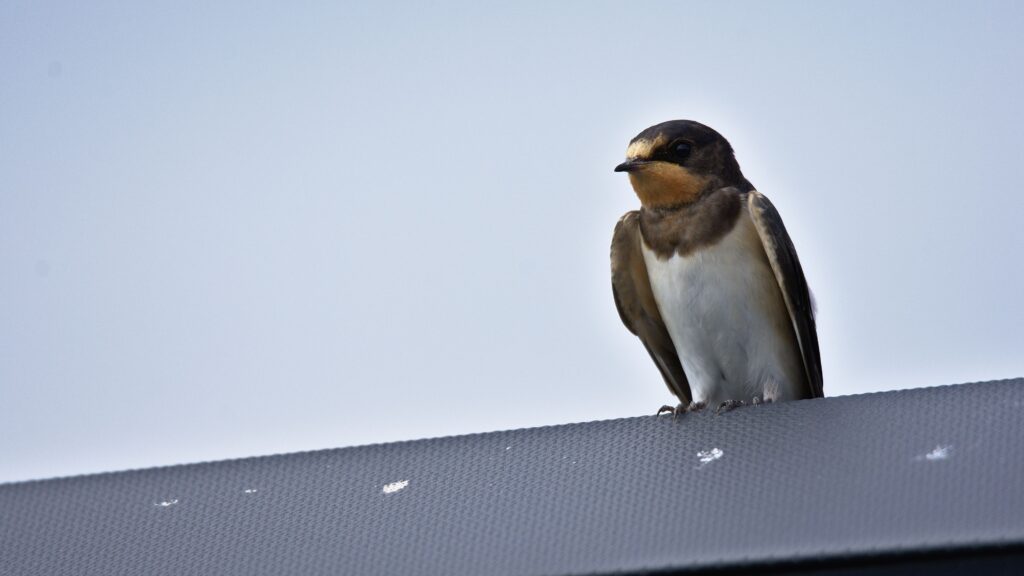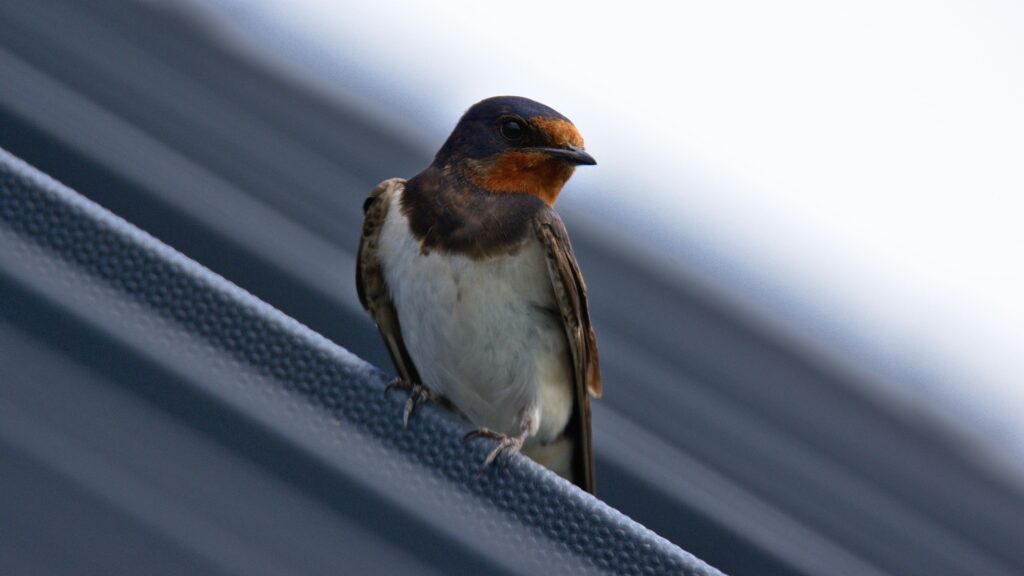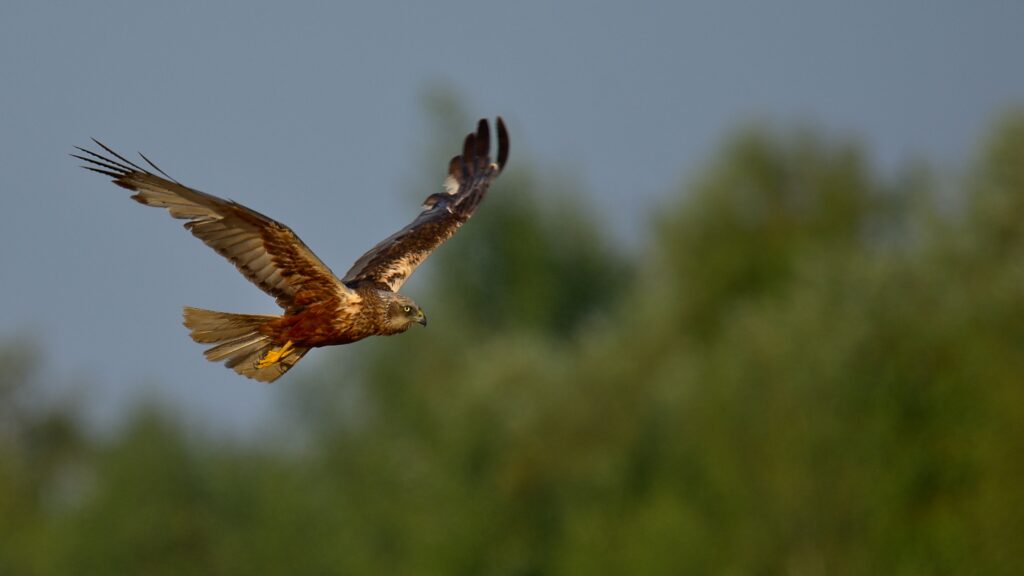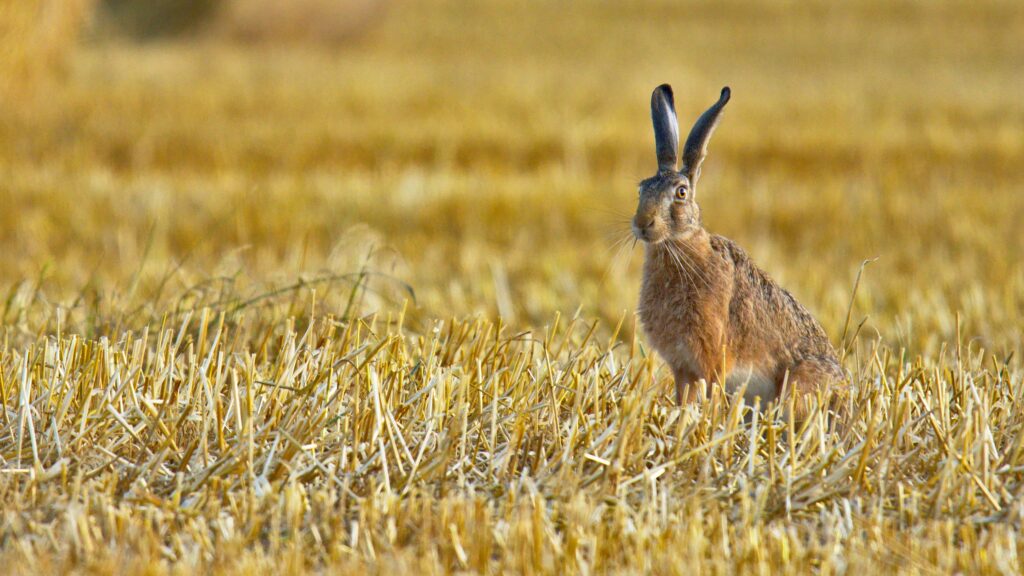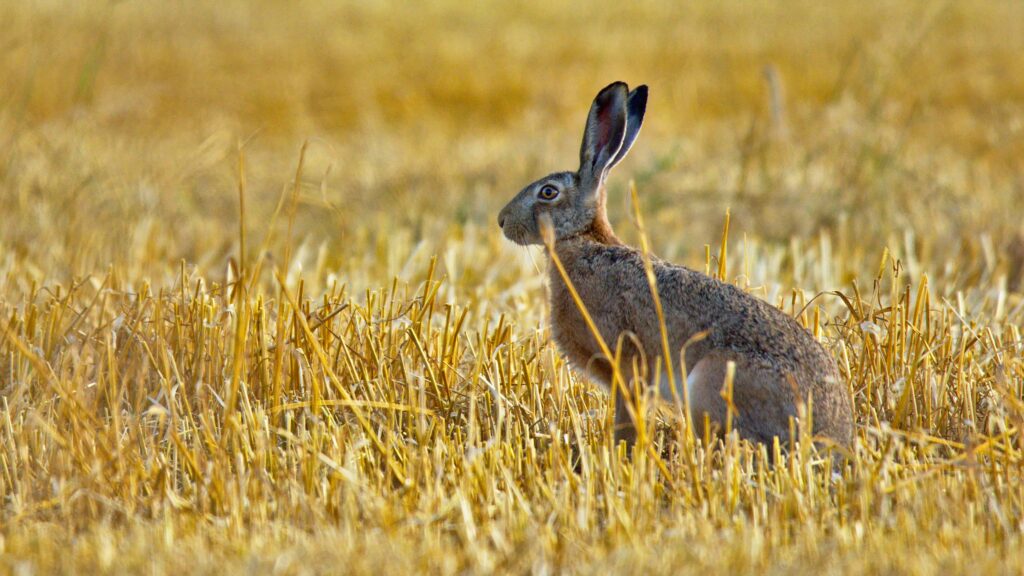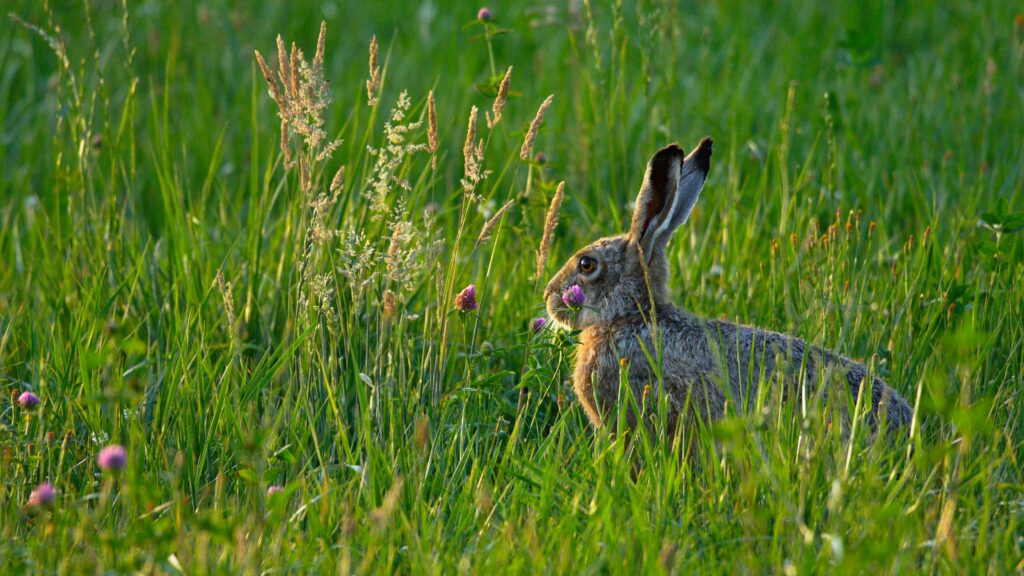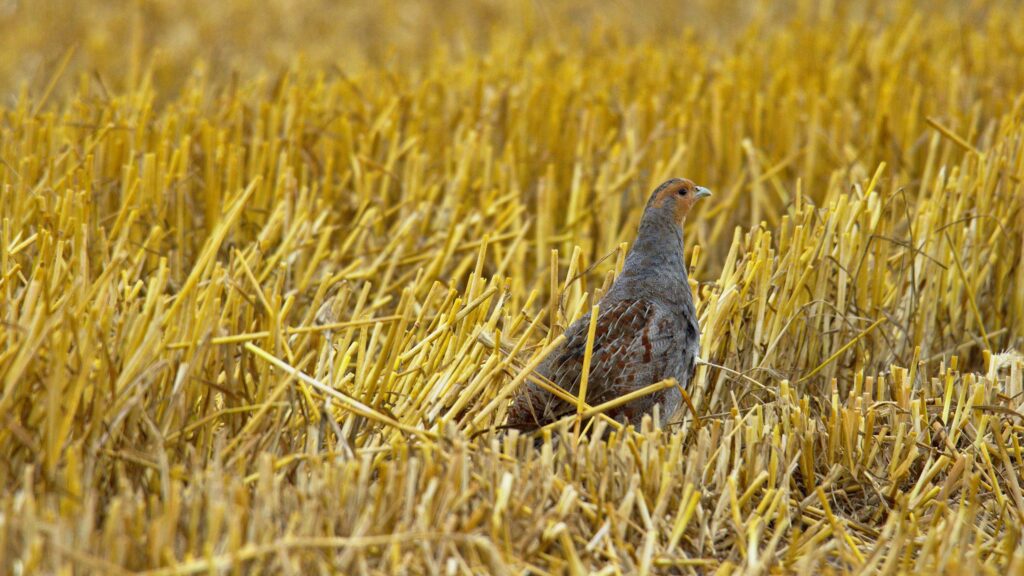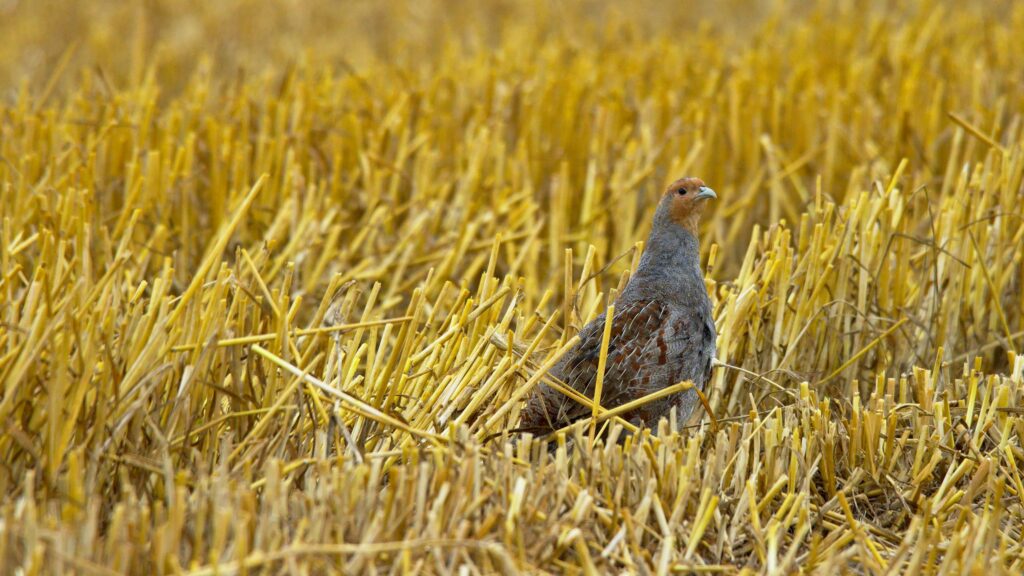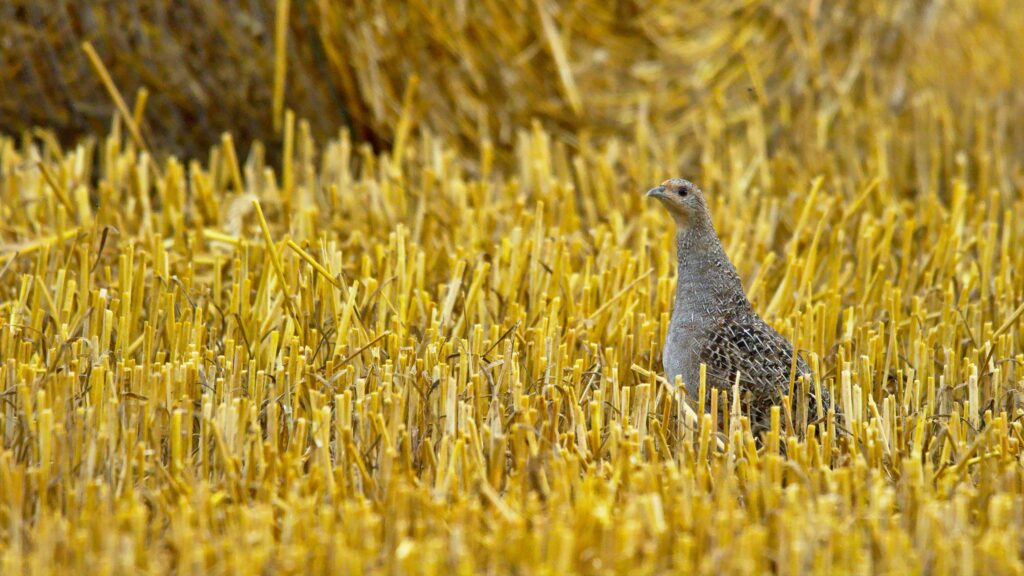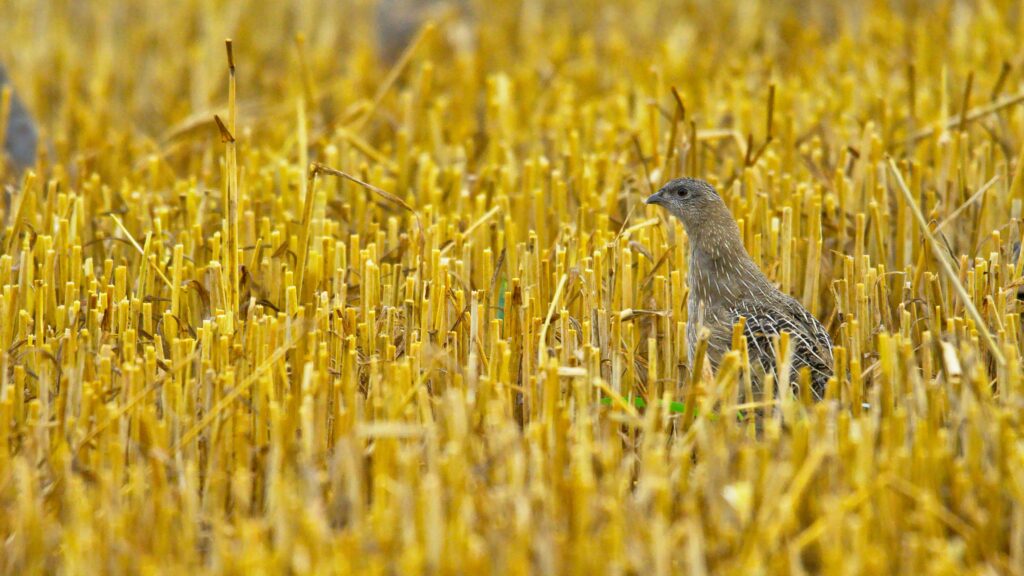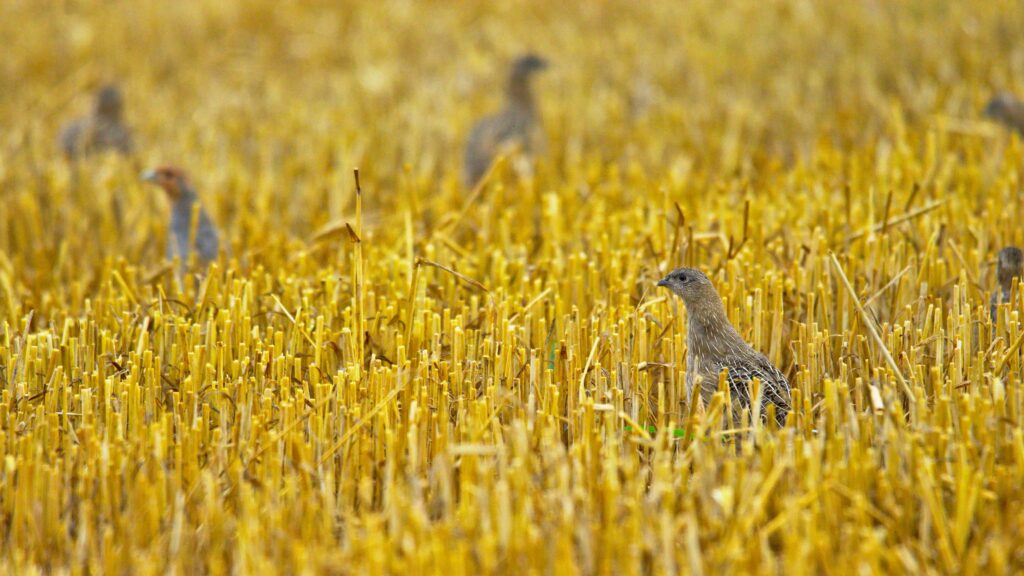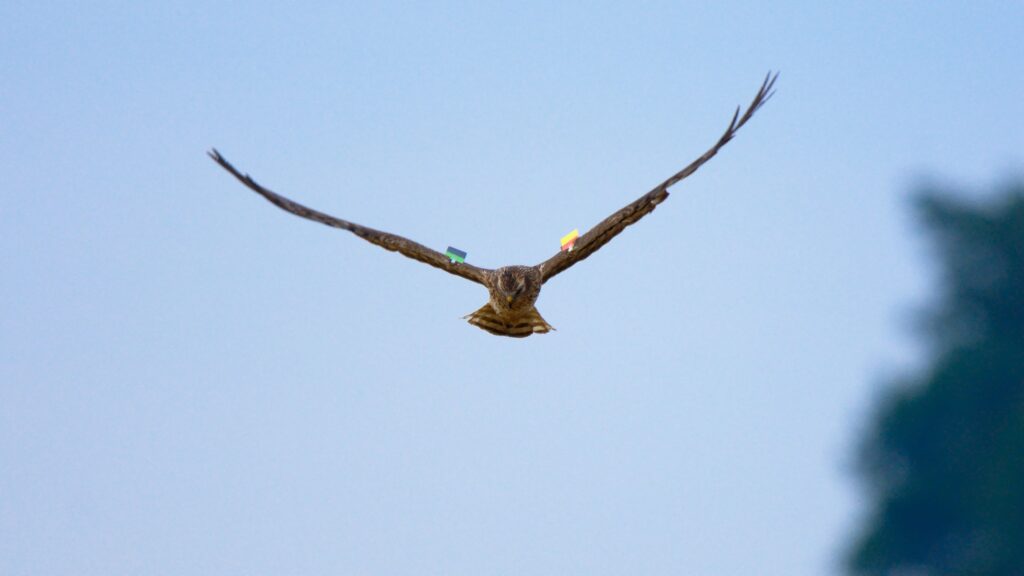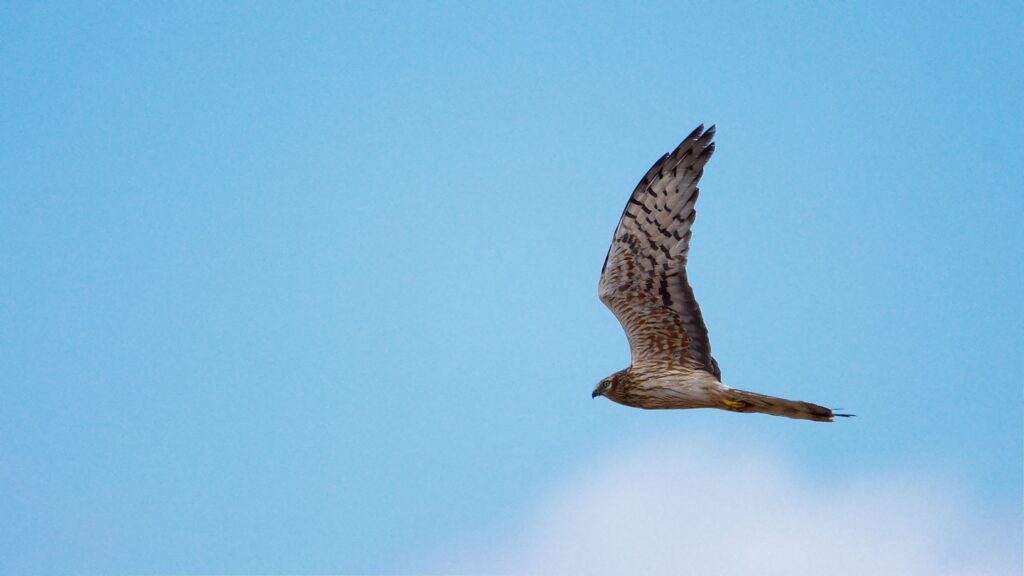A Great Spotted Woodpecker.
Autor: Paweł Sędrowski
Czapla biała.
Great White Heron.
Poniższe zdjęcie udało mi się zrobić tydzień temu nad Zimną Wodą koło Łukowa. Ten piękny ptak to czapla biała. Bardzo podoba mi się na tym zdjęciu to zestawienie pięknego, dużego ptaka i ogromnego drzewa skąpanego w świetle wschodzącego słońca. Gdyby jeszcze tylko czapla leciała w drugą stronę… No cóż, nie można mieć wszystkiego.
I took the below photo a week ago over the Cold Water reservoir near Łuków. That beautiful bird is a great egret also known as a great white heron. On this photo I really like the comparison of that beautiful, large bird and an enormous tree bathed in the glow of the rising sun. If only was that egret flying in the opposite direction… Well, you can’t have everything, I guess.
Kaczki i opona.
Ducks and a Tire.
Polska przyroda jest fascynująca! Tu kaczuszka, tam opona… Parę dni temu wybrałem się nad Zimną Wodę w okolicy Łukowa aby sprawdzić co można tam sfotografować. Spotkałem między innymi kaczki. Wszystko byłoby pięknie gdyby nie śmieci… O ile zarządca Zimnej Wody zadbał o to, żeby przy głównym zbiorniku było w miarę czysto to wystarczy odejść kilkanaście metrów aby ponownie ujrzeć typowy dla naszego kraju krajobraz – piękna przyroda i śmieci.
Gdy wychodzę na zdjęcia to mam wrażenie, że w naszym pięknym kraju nie ma 100 m2, na których nie ma jakiegokolwiek śmiecia. Puszki po piwie, butelki szklane i plastikowe i reklamówki to, niestety, stały element naszego krajobrazu.
Polish nature is fascinating! Here’s a ducky, there’s a tire… A few days ago I went to Cold Water near Łuków to see what can be photographed there. Among other things I met some ducks there. It would be great if it wasn’t for the trash laying around… The administrator of Cold Water is keeping the area of the main reservoir clean but only a dozen meters away you can find a view so typical for our country – beautiful nature and trash laying around.
When I go for photography I often have an impression that there one can’t find 100 m2 where is no trash laying around. Beer cans, plastic and glass bottles or plastic bags are, unfortunately, common part of our landscape.
Orlik krzykliwy.
A Lesser Spotted Eagle.
Wczorajszy poranek wybitnie nie sprzyjał fotografowaniu zwierząt a zwłaszcza ptaków, więc aparat wziąłem ze sobą chyba tylko z przyzwyczajenia. W pewnym momencie będąc w okolicy Jaty wypatrzyłem ptaka drapieżnego. Pierwsza myśl – „znowu myszołów”, ale kolejna sekunda zachwiała tę pewność – ptaszek miał dość dziwny kształt skrzydeł jak na myszołowa. Po cyknięciu kilku zdjęć, powrocie do domu, przewertowaniu przewodnika po ptakach i upewnieniu się u znajomego eksperta mogłem już z całą stanowczością stwierdzić, że udało mi się dziś upolować orlika krzykliwego.
To moje pierwsze spotkanie z tym ptakiem. Jako że zaczyna się przelot ptaków szpotniastych to mam nadzieję, ze uda mi się w najbliższych dniach zobaczyć jeszcze jakiegoś przedstawiciela tego gatunku.
Yesterday morning conditions were not nice for wildlife and especially bird photography, so I had my DLSR with me only because I’m used to having it. At one moment, in the vicinity of Jata, I spotted a bird of prey. My first thought was that it was another buzzard but in the next second I new it was something different – this birdie’s shape of the wings was to odd for a buzzard. After taking a few photos, returning home, checking out a bird guide and making sure by consulting an expert I know I knew I shot a lesser spotted eagle.
It’s my first encounter with that bird. As the season of migrations of the accipitriformes starts I hope that I’ll have a few more meetings with those eagles in the coming days.
Dymówki na dachu.
Swallows on the Roof.
Ostatnio na mój dach zawitały jaskółki dymówki. Ostrożnie wyglądając przez okno dachowe udało mi się zrobić im kilka zdjęć. Jak się Wam podobają?
Lately barn swallows decided to take some rest on my roof. I managed to take some photos of them through a roof light. How do you like them?
Błotniak stawowy.
Marsh Harrier.
Po wielu spotkaniach z błotniakami łąkowymi miałem wreszcie spotkać ich krewniaka – błotniaka stawowego. Oba te gatunki są śmiertelnymi wrogami. Błotniaki stawowe jako większe i silniejsze często zjadają pisklęta błotniaków łąkowych a łąkowe za to w razie zagrożenia gniazda zawzięcie atakują stawowe.
After several encounters with Montagu’s harriers I finally had a chance to meet their cousin – a western marsh harrier. Both of those species are mortal enemies. Marsh harriers as bigger and stronger often eat nestlings of the Montagu’s harriers which when their nest is threatened fiercely attack the aggressors.
Zające.
Hares.
Kto rano wstaje, temu Pan Bóg daje – w tym przypadku zajączka! A nawet dwa.
Czy wiecie, że samica zająca potrafi być w dwóch ciążach jednocześnie? Pod koniec jednej ciąży potrafi ona zajść w kolejną i mieć w macicy jednocześnie dwa mioty. Zjawisko takie nazywa się nadpłodnieniem.
Early bird gets the worm! Well in my case not a worm but a hare, or even two hares.
Do you know that a hare can have two pregnancies at the same time? At the end of the first pregnancy a female can become pregnant again and have two litters in her uterus. That process is called superfecudation.
Kuropatwy.
Grey Partridges.
Wczoraj rano spotkałem stadko kuropatw buszujące w rżysku. Na pierwszych dwóch zdjęciach widać samca – ma dość intensywne ubarwienie. Na kolejnym samicę o ubarwieniu podobnym, ale zdecydowanie mniej intensywnym, a pozostałe trzy zdjęcia przedstawiają osobniki młode. Szacuję, że całe stadko miało kilkanaście osobników. To moje pierwsze spotkanie z tymi ptakami.
Yesterday in the morning I met a flock of grey partridges walking in a stubble. In the first two photos you can see a male with intense colours. On the third is a female with same colours but much less intense and the remaining three show juveniles. As I recall the flock had over a dozen of birds. It was my first meeting with partridges.
Błotniak łąkowy OJPN.
OJPN Montagu’s Harrier.
Jako że żniwa w pełni, a ja byłem ciekaw co u błotniaków łąkowych, to podjechałem dziś w okolicę znanych mi gniazd w okolicy wsi Kierzków i zobaczyłem, że pola skoszone, ale bardzo szybko też dowiedziałem się, że młode z tamtejszych gniazd zdążyły wylecieć z gniazd. Szybko wypatrzyłem jednak krążącą nad rżyskiem samicę, która na dodatek nosiła znaczki skrzydłowe. Jak udało mi się ustalić zostały one jej założone w tym roku i jest to samica z jednego z gniazd z Kierzkowa, a skoro dalej tam krąży, to pewnie dalej dokarmia swoje młode – mimo, że te już zdążyły opuścić gniazdo.
Swoją drogą – to już mój trzeci odczyt błotniaka!
As the harvest is ongoing I was eager to see how the Montagu’s harriers are doing – so I went in the vicinity of the village of Kierzków where I knew that harriers nests are located. On site I found that the crops where already cut down but I also learned that the young grew up enough to leave their nests. I spotted a female Montagu’s harrier that was circling over the stubble and was wearing wing tags. I turned out that she is wearing them since this year and that it’s a female from one of the nest near Kierzków. Her presence is suggesting that she is still feeding her young despite the fact they were old enough to leave the nest.
By the way – it’s my third read out of a Montagu’s harrier!
Pani Błotniakowa.
Mrs. Harrier.
Poniżej ujęcie samicy błotniaka łąkowego, którą udało mi się ustrzelić jakiś czas temu. Samca, dla porównania, można zobaczyć w tym wpisie.
Below is a photo of a female of a Montagu’s harrier that I shot some time ago. Male, for comparison, can be found in this entry.
